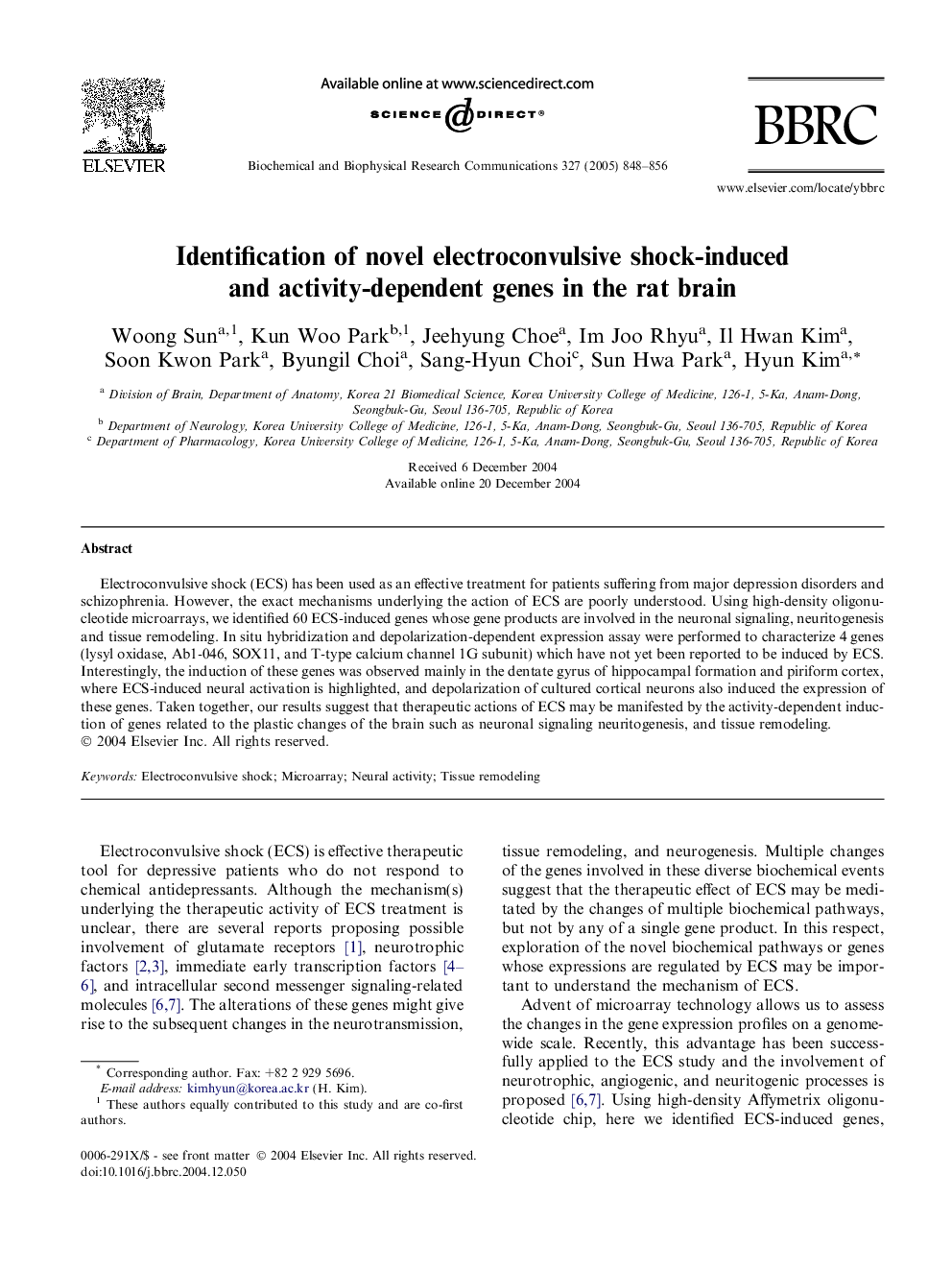| Article ID | Journal | Published Year | Pages | File Type |
|---|---|---|---|---|
| 10771514 | Biochemical and Biophysical Research Communications | 2005 | 9 Pages |
Abstract
Electroconvulsive shock (ECS) has been used as an effective treatment for patients suffering from major depression disorders and schizophrenia. However, the exact mechanisms underlying the action of ECS are poorly understood. Using high-density oligonucleotide microarrays, we identified 60 ECS-induced genes whose gene products are involved in the neuronal signaling, neuritogenesis and tissue remodeling. In situ hybridization and depolarization-dependent expression assay were performed to characterize 4 genes (lysyl oxidase, Ab1-046, SOX11, and T-type calcium channel 1G subunit) which have not yet been reported to be induced by ECS. Interestingly, the induction of these genes was observed mainly in the dentate gyrus of hippocampal formation and piriform cortex, where ECS-induced neural activation is highlighted, and depolarization of cultured cortical neurons also induced the expression of these genes. Taken together, our results suggest that therapeutic actions of ECS may be manifested by the activity-dependent induction of genes related to the plastic changes of the brain such as neuronal signaling neuritogenesis, and tissue remodeling.
Related Topics
Life Sciences
Biochemistry, Genetics and Molecular Biology
Biochemistry
Authors
Woong Sun, Kun Woo Park, Jeehyung Choe, Im Joo Rhyu, Il Hwan Kim, Soon Kwon Park, Byungil Choi, Sang-Hyun Choi, Sun Hwa Park, Hyun Kim,
